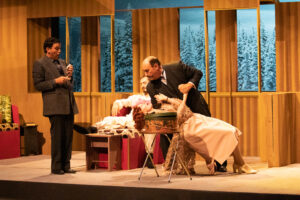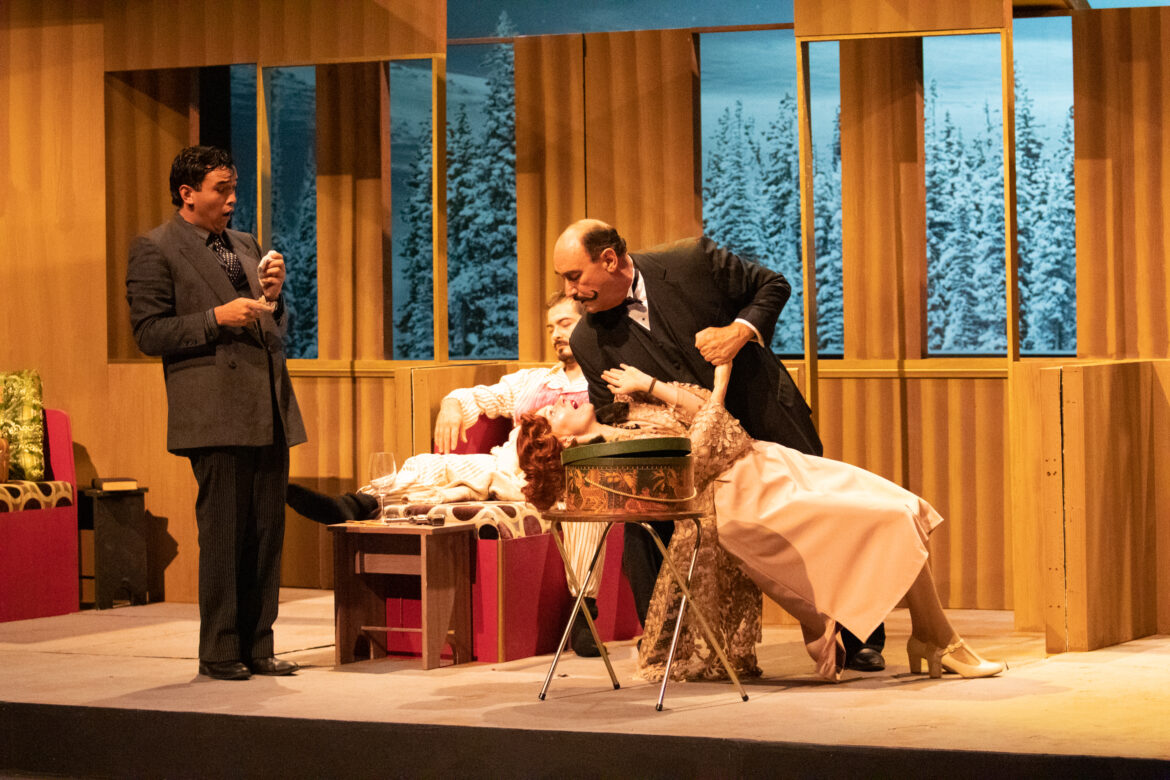There are many whodunit mysteries on film and TV these days, such as “The After Party” and “Knives Out.”
Then, there are the timeless classics from the golden age of English detective fiction.
For those who gravitate more toward old school material in the genre, a night spent in 1930s Europe riding on an elegant train with one dead passenger might be just as exciting, if not more so, than the contemporary works of mystery.
Agatha Christie’s “Murder on the Orient Express,” adapted for the stage by Ken Ludwig, premiered at the Performing Arts Building on Friday, presented by Los Angeles Pierce College Theatre and directed by Esdras Toussaint as the first play of the semester.
“Murder on the Orient Express” is a dark comedy mystery that takes place in 1934 on the long-distance passenger train service originally operated by the Compagnie Internationale des Wagons-Lits as it traveled through Yugoslavia and other parts of Europe.
Christie wrote the story based off of the real-life kidnapping of American aviator Charles Lindberg’s baby. The murder on the train occurs because a passenger is tied to an incident of a child kidnapping-turned-murder.
The lights dim to open the story, and a train conductor’s voice gives the audience the feel of being passengers on a train.
The narrator of the story is famed detective Hercule Poirot (Jack Bernaz), who is invited aboard a train ride where Samuel Ratchett (Deniz Boysan), a man with a checkered past, is stabbed to death. Poirot spends the night interrogating witnesses to find the killer.
Despite the dark themes, the two-act mystery contains scattered laughs that turn into more of a black comedy. Plot twists keep the story interesting throughout the around two-hour running time.
As Samuel, Boysan shows violent authenticity by grabbing women aggressively and getting physical with them. His scary demeanor makes him an ideal victim.
Another standout of the impressive cast is Jennifer Moses, who portrays boisterous, singing American bombshell Helen Hubbard, who provides comic relief. Her extravagant attire and her curly bobbed hair without a lock out of place matches her loud, brashy personality. One of the funnier moments is when Moses’ belts the retro sounds of the jazz age in a style that was hilariously annoying to the passengers.
Some of the other strong comedic moments come from Dale Van Slyke, who plays train director Monsieur Bouc. While Murder demands lots of physical acting from most of the actors, Van Slyke’s flailing, over-the-top movements paired with neurotic facial expressions of a panicking train director are hilarious.

The era is well represented with sets and lighting designed by Michael Gend in a sepia tone fashion that gives it an old fashioned feeling.
Costume designer Eileen Gizienski shows good attention to detail. The actresses wear accurate styles of the 1930s, with such articles as Oxford heels, satin bias cut gowns and slinky silhouettes. The men look debonair, just the way one imagines continental folks traveling in style.
Train movement is represented by projecting the European landscapes on a large screen designed by DJ Medina that gives the appearance of movement.
Toussaint does a good job at balancing the pace of the play with the fast and slow parts of the plot. The jokes in the play land well, the story moves seamlessly to the climax that serves as the icing to an already satisfying cake.
For a play with a fair amount of darkness, “Murder on the Orient Express” is a hilarious and wild ride.
The Theatre department’s next production is “Steel Magnolias,” which opens on Dec. 1.




